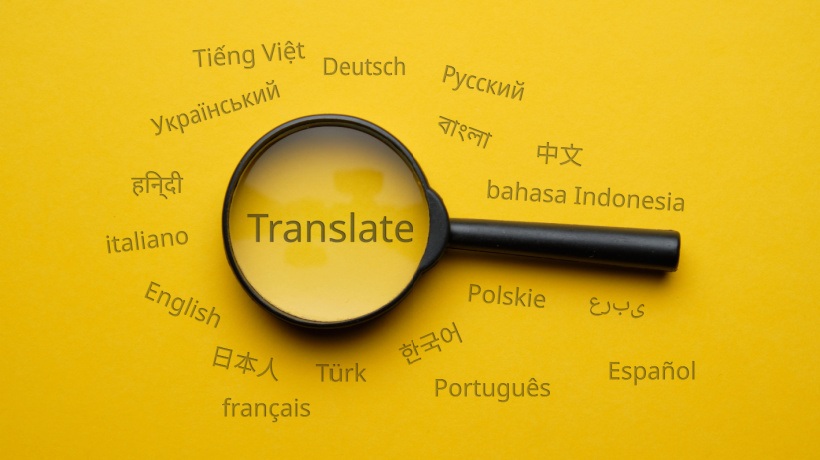Breaking Barriers: The Evolution Of Global Business
In the current interconnected global landscape, businesses are no longer restricted to operating solely within their local markets. The advent of the internet has revolutionized business operations, creating expansive possibilities to connect with a worldwide audience. However, to successfully tap into these markets, businesses must overcome the language barrier through effective translation and localization strategies.
Translation Vs. Localization
Before delving into the intricacies of translation and localization, it is paramount to comprehend the fundamental distinction between the two processes. Fundamentally, translation entails transforming text from one language to another while preserving its fundamental meaning. On the contrary, localization represents a more comprehensive approach, transcending the boundaries of mere translation. It involves not only the linguistic conversion of content but also the intricate adaptation of materials to seamlessly align with the cultural nuances and linguistic subtleties specific to the target audience. In essence, while translation ensures linguistic accuracy, localization strives to create a harmonious fusion of language and culture, ensuring that the content resonates authentically with the intended local audience.
The Importance Of Translation
Global Reach
Translation broadens the reach of a business by making its content accessible to a diverse audience. Whether it’s a website, marketing materials, or product documentation, translating content allows companies to connect with potential customers worldwide.
Credibility And Trust
Consumers are more likely to trust a brand that communicates in their native language. A well-translated message instills confidence and credibility, fostering a positive perception of the brand among the target audience.
Legal Compliance
In numerous sectors, adherence to local laws and regulations is of paramount importance. Accurate translation ensures that legal documents, contracts, and terms of service are clear and compliant with the laws of the target market.
The Power Of Localization
Cultural Sensitivity
Localization takes into account the cultural nuances of a target market. It involves adapting not only the language but also images, colors, symbols, and even humor to align with the cultural preferences of the audience. This approach makes the content resonate more effectively with the local population.
User Experience
A seamless User Experience is vital for the success of digital products. Localization extends beyond linguistic adaptation to User Interfaces, ensuring that the User Experience feels natural and intuitive to individuals from different cultural backgrounds.
Marketing Effectiveness
Marketing campaigns that resonate with the local audience are more likely to be successful. Enabling companies to tailor their marketing messages to align seamlessly with the cultural values and preferences of the target market, localization amplifies the effectiveness and impact of their campaigns. Challenges arise in the realms of both translation and localization: linguistic intricacies abound in certain languages, featuring nuances, idioms, and expressions that pose challenges for accurate translation. Professional translators with expertise in the subject matter are crucial to overcoming these linguistic hurdles.
Cultural Misunderstandings
A lack of cultural awareness can lead to unintentional misunderstandings. A symbol or color that is innocuous in one culture may carry a different meaning in another. Localization requires careful consideration of these cultural subtleties to avoid unintended consequences.
Consistency Across Platforms
Maintaining consistency in messaging and branding across different languages and cultures can be challenging. Establishing clear guidelines and using advanced translation and localization tools can help ensure a unified brand image.
The Role Of Technology
1. Machine Translation
Advances in machine translation have transformed the speed and efficiency of the translation process. While these tools are valuable for quick and large-scale translations, human expertise remains essential for nuanced and context-dependent content.
2. Translation Management Systems (TMSs)
TMS platforms streamline the translation process, allowing businesses to manage and organize content efficiently. These systems help maintain consistency and improve collaboration among translators and localization teams.
3. Artificial Intelligence (AI)
AI is increasingly being used to enhance translation and localization efforts. Natural Language Processing (NLP) algorithms can improve the accuracy of machine translation, and AI-powered tools can analyze user behavior to optimize localized content for better engagement.
Conclusion
In the era of globalization, effective translation, and localization are indispensable for businesses aiming to expand their footprint and connect with diverse audiences. From building trust and credibility to ensuring legal compliance and fostering positive User Experiences, the impact of translation and localization goes far beyond mere language adaptation. As technological advancements persist, businesses need to stay informed about the latest tools and methodologies to fully leverage the potential of global markets. Embracing translation and localization is not just a strategy; it’s a key driver for success in the global landscape.

